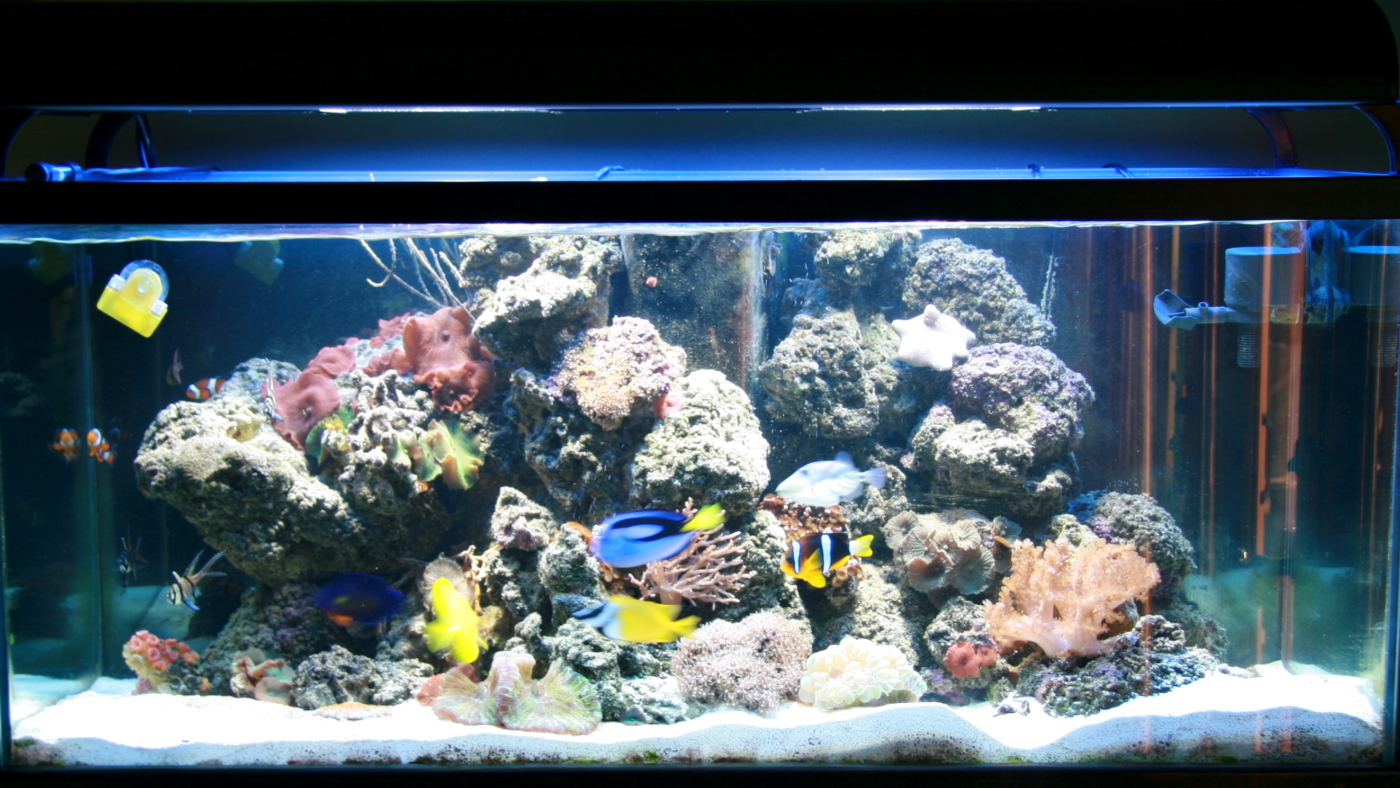I’m going to do something I never do. No, I’m not talking about watching romantic comedies with my wife. I’m talking about writing back-to-back fish posts on our company website.
Last month I wrote about the danger of overstocking your aquarium, and what exactly defines overstocking. Today I’m going to write about something even more important; the need to quarantine ALL new fish before they go into your main display aquarium.
No matter how diligent you are, or how good the store is where you buy your fish, at some point you will come into contact with a dreaded marine parasite or disease. Saltwater Ich, marine velvet, Brooklynella, flukes, and Vibrio bacteria are just some of the scourges of the fish tank hobby. I myself didn’t believe in quarantine until about 5 years ago, when I saw marine velvet wipe out my entire 200 gallon aquarium, killing several thousand dollars worth of fish in the process. I vowed that would never happen again, and every single fish I have purchased since that time has undergone a rigorous quarantine protocol.
Quarantining your new fish before introducing them to your main tank accomplishes two things. First, if done properly, it eliminates the spread of diseases like the ones mentioned above. Second, it gives new fish, which are always stressed out after transport, the ability to slowly acclimate to your water parameters and your foods with minimal stress and no competition from other aquarium tank mates. So how do you set up a quarantine tank?
A quarantine system doesn’t need to be big, nor does it need to be fancy or pretty. A 29 gallon tank makes an excellent choice for most saltwater fish, but if you’re planning on ordering show-size specimens you can go a bit bigger. The QT tank should have a bare bottom (no rock or sand), some pieces of PVC pipe or plastic flower pots for much-needed hiding places (don’t use live rock, because it will absorb medication), a heater, a simple hang on the back filter, a powerhead for some extra water movement, and a small, inexpensive LED light. That’s all you need.
Set-up wise, here is my how I do things. You can fill your QT tank with water from your display if you’d like (during water changes), but I prefer mixing up fresh saltwater. You’ll need to ensure that when fish are in the system, your QT tank is kept biologically active. To do that, I keep a few extra pieces of porous filter media (sponges) in the hang on filter, and regularly use a bacterial additive product like Fluval Cycle. I add this not only right before a new fish goes in, but also weekly during my QT tank water changes. I keep my QT tank at 78-79 degrees, and I keep the salinity/specific gravity a bit lower than my display, at 1.022. That makes it a bit easier for the fish’s kidneys to function, especially while they’re stressed.
Some people prophylactically treat for parasites and diseases with copper based medications, and some wait until they see a problem before doing so. There are pros and cons to both, but personally I like to prophylactically treat most new fish with copper a few days to a week after it has arrived, so as to give the new addition some time to settle in before treatment. It’s important to remember that copper is a poison to fish as well as parasites, so always take it slow when adding copper to the tank. I use the Cupramine product, and I like to add it slowly over the course of 5 or 6 days to give the fish some time to adjust. You’ll need to treat your fish with copper for a good 21 days, and you’ll likely want to keep your new fish in quarantine for at least a month, and sometimes as long as two months.
There’s an old saying that “hope is not a strategy”. Putting a new fish directly into your main system and hoping it doesn’t have a disease or a parasite is a recipe for disaster. Take it from someone who has made mistakes: ALWAYS quarantine new fish before adding them to your main aquarium. You’ll be glad you did.


Add a Comment